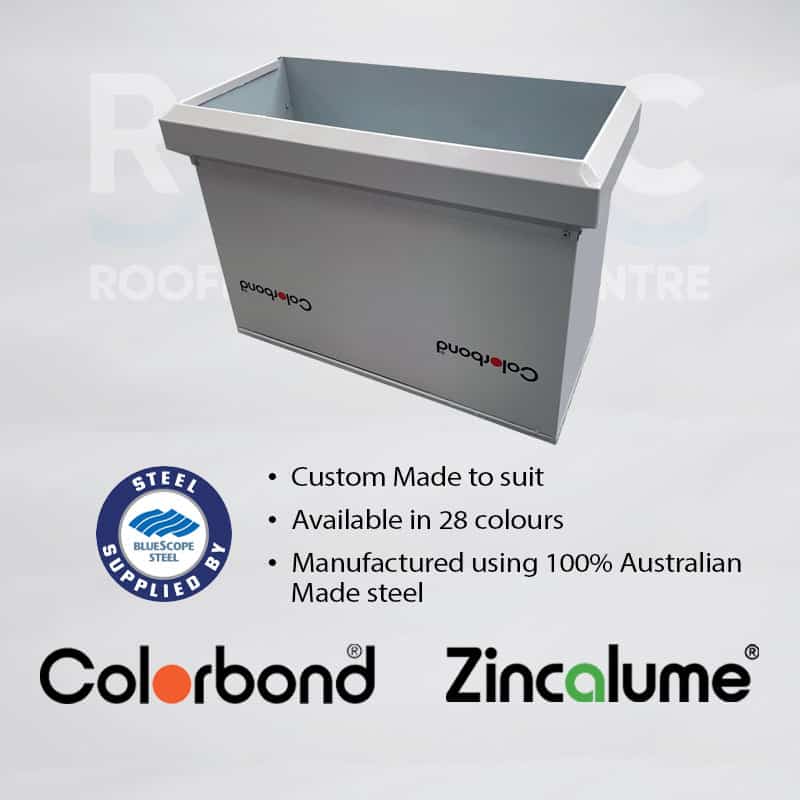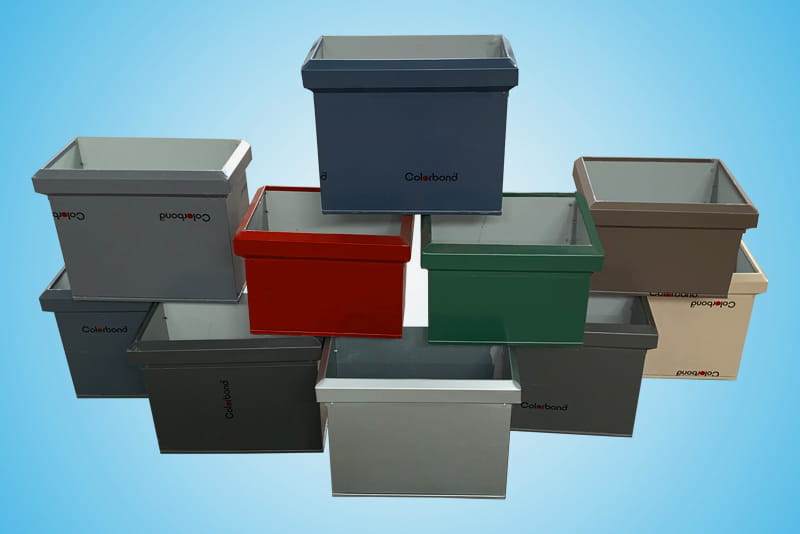Whether you’ve purchased a new home that needs some TLC or are an existing homeowner with a guttering system that isn’t doing the job as well as it should, replacing your rainhead may support flow rate performance. After all, you want your roof to adhere to the right building codes, require minimal maintenance on your part, and help you with cost savings for the long term.
The right rainheads can improve the flow of water against any rainfall intensity or improve water quality if you plan on harvesting rain from the night before. This article will be your comprehensive guide to railheads and their solutions.
What are Rainwater Heads?
Also known as rainwater heads, rainwater diverters, collectors’ heads, and even leaf eaters, rain heads are first-stage rainwater filtration devices for downpipes outside your property. These built-in screens also help to stop leaves, pests, and mosquitoes from getting into your pipes.
Rain heads are critical to building and architectural applications and are functional components of harvesting and gutter systems, especially for your home! What are some of the custom design options?
- Long tapered
- Rectangle
- Rectangle/collared
- Rectangle/tapered
- Square
- Standard tapered
- Conical
- Ned Kelley
- Rectangle collared/tapered
The main function of the rain head in building design is to collect rainwater from the roof and direct it into a downpipe or gutter system. A rain head prevents debris, leaves, and branches from clogging the drainage system and reduces water flow velocity, splashing, and noise.
What Are The Benefits of Rainheads?
What can a rainhead provide for your property? If you’ve purchased a rainwater tank, installing rain heads has more benefits than you might imagine.
- First-level filtration means that they mainly guard against leaves and prevent mosquitos, insects, vermin, and annoying debris from getting into your pipe work.
- High-quality tank water. This is important if you plan to use your rainwater as a portable water supply for drinking, cooking, or watering plants.
- Reduced tank maintenance. It’s recommended to inspect your water storage tank for sludge build-up, and since rainheads filter debris out from your rainwater, you won’t need to clean the tank as often!
- Cost effective, as screening water at the entry point to pipework is a simpler way to keep debris away. For example, gutter guards are often a bit more expensive than rain heads.
Design Considerations
Let’s take a look at the design considerations for rainheads before you jump the gun and buy one!
Material and Aesthetics
Rain heads come in a range of materials (copper, aluminium, stainless steel, and PVC), but when investing in rain heads, you want the best material on the market. For example, BlueScope Colorbond and Zincalume Steel rain heads are corrosion-resistant and can handle harsh, unpredictable Australian weather conditions. They are eco-friendly and seamlessly transport rainwater from the roof to rainwater collection systems.
Contributing to water conservation efforts, Colorbond rainheads are a good investment due to their durability, eco-friendliness, and aesthetic appeal.
There are many custom rainwater heads made in-house, and you can choose from standard sized rain heads to custom rain heads manufactured to your specifications.
You may also want to consider custom sumps, flat cover plates, and custom trays made from Colorbond steel.
Custom-Made Rainheads

Acting like a large overflow to assist downpipe water flow, custom-made rain heads are handmade to suit the needs of your individual project.
Lightweight, durable, with Thermatech paint technology, and easy to customise, there are also Stocked-Sizes on the shelf available in Colorbond steel and 28 colours such as Cottage Green, Deep Ocean, Basalt, Dune, Terrain, Mangrove, Surfmist, Wallaby, Shale Grey, and more!
If you’re keen on replacing your current gutter with steel gutters, larger gutters, and keeping your home exterior safe from potential damage (you don’t want a sneaky leak in your interior), Roofing Options can help you maintain the correct volume of water and a well-designed gutter system without overflowing, regardless of the complexity of your roof size.

Overflow Provisions
Provisions of the National Construction Code (NCC) require both building and plumbing practitioners to comply with AS/NZS 3500.3 for the Deemed-to-Satisfy design of a box gutter system.According to the Victorian Building Authority webinar, the weir of the rain head overflow must be 25mm below the sole of the box gutter, the width of the overflow must be equal to the width of the rain head, and the rain head must be left open above the overflow weir.
What does a Deem-to-Satisfy installation look like for box gutters discharging to a rain head?
- Box gutter width, grade, and flow rate must chart the minimum depth of a box gutter that discharges to a rain head.
- The design flow rate can be plotted between 3 and 16 litres per second, and sole widths of 200mm cannot accommodate flow rates exceeding 10.5 litres per second
- Grades for box gutters can be charted at 1:200, 1:150, 1:100, and 1:40
What are the Deemed-to-Satisfy downpipe sizing and outlet location for a Box gutter discharging to a rainhead?
- The size and shape of the downpipe is selected when sizing the downpipe
- Round downpipes must be fitted so the centre of the downpipe is not further than the diameter of the downpipe from the nearest vertical side of the rainhead
- A square or rectangle downpipe must be fitted so the centre of the downpipe isn’t further than the average of the two side dimensions of the downpipe
- Downpipes must discharge vertically from the sole of the rainhead
What about box gutters with a high-capacity waterflow? What is the Deemed-to-Satisfy sump length?
- Primary sumps incorporating a high-capacity overflow must be 600mm in length, including a 200 mm secondary sump and 200 mm space on either side of the secondary sump
- The width of the primary sump is the same as the box gutter width
Choose the Right Gutter
- Gutter Profile. Although the material and size of your gutters is important, you need to think about the gutter profile, which is essential to water flow. A half round gutter for example has a smoother shape, which can cut back the chances of clogging. Likewise, a box gutter gives a modern, streamlined look that complements contemporary home designs.
- Roof Design Compatibility. How does your gutter integrate with your roof design? Homes with steep roofing may need a deeper gutter profile that can handle proper water flow, whereas a low-pitched roof can be better suited to a wider gutter system.
Consider Gutter Accessories. Improving your gutter system with accessories such as leaf guards can stop leaves and debris from clogging your gutters to support flow and prevent potential fire risk.
Downpipe Selection
Choose a downpipe that improves the efficacy of your rain head system and works well with the style of your home. For example, the type of profile you choose can affect the flow rate and aesthetics of your rain harvesting system.
Consider placing downpipes in areas where rainwater naturally flows off your roof (such as valleys or roof hips) instead of placing them in standard corners. You’ll notice that your rainhead is collecting a lot more water.
For sizing, make sure that your downpipes match your gutter system’s capacity to handle heavy rainfall. For example, an undersized downpipe can cause overflowing, whereas an oversized one might not work at all with your gutter system.
Gutter and Downpipe Integration
Pick downpipes that mimic the material and colour of your gutters for a cohesive look. You could choose the same dark tones or beige tones for a softer look.
Ensure your gutters have proper slope and alignment towards your downpipes to stop overflowing or leaks.
Commit to regular maintenance, keeping it clean and clear of debris for ideal rainwater collection. You won’t need to stress about potential blockages or damage!
Minimising Water Ingress on Gutters and Downpipes
Wild weather can weaken buildings, even more so if heavy rain or hailstones have infiltrated the protective systems, and water can deteriorate and cause corrosion from this build up of moisture. Although gutters and downpipes are extremely durable, how can you reduce the chances of water ingress and encourage optimal performance?
Remove Vegetation
Get rid of any vegetation behind your downpipes! Plants can easily grow in odd property areas where there is a large supply of water and sunlight, and although it’s good to maintain the air quality of your surroundings, they can block up the passageway of rain and stormwater.
Install Leaf Guards
Although leaves and branches can be removed manually, this takes up a lot of time and effort; leaf guards are an excellent way to make sure gutters and downpipes aren’t blocked up. The Roofing Options team supplies.
Replace Broken Parts
Has part of your downpipe or gutters been damaged? You need to replace them straight away. When changing over old parts, it is recommended by roofing specialists to use the same material for the downpipes and gutters, and surfaces must be painted according to Australian standards to resist corrosion.
Always Remove Debris
Downpipes and gutters remain open all the time to remove rainwater away from your property, but without regular cleaning, plants, leaves and dirt can cause leaking joints. You don’t want to be paying a large expense on roofing restoration!
Learn more about effective maintenance techniques by reading about how to maintain polycarbonate roof panels.
Whether you need a Colorbond drip tray for an air conditioning unit, improved rainwater harvesting systems, a chimney cover, or a Colorbond finish cover plate around the house, Roofing Options can suit your needs on time and within budget!
Roofing Options: Custom Rainhead Options!
If you’re looking for rainheads and sumps, the Roofing Options team supply rainheads crafted in Melbourne for Australian homes. We supply and deliver Steel Roof Sheets, Gutters & Metal Fascia, Downpipes & Accessories, Custom Made Flashings, Laserlite 2000 and 3000, Sunglaze, and so much more for homeowners and commercial buildings.
Evaluate your rainwater capacity needs, explore standard options such as Colorbond or Zincalume (which are always promptly delivered!), choose customised solutions that suit the specs of your roof, and get a custom quote that works perfectly for your budget.
Contact us today or visit our stores in Cranbourne, Coburg, or Campbellfield for a professional recommendation on our high-quality Australian-made supplies that are always built to last.













